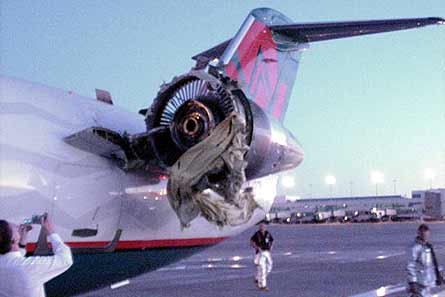The US Federal Aviation Administration has issued an emergency airworthiness directive (AD) calling for immediate inspections of General Electric CF34-3A1, -3B and B1 engines for potential fan disk failure, following the discovery of parts from the shattered engine which broke apart in mid-air while powering a Mesa Airlines Bombardier CRJ200 on 25 January.
Inspection of the parts, which were recovered from countryside southwest of Denver, Colorado, indicated that the fan disk was caused by a crack which had developed in the bore of the disk itself. Close inspection of the pieces revealed this had been caused by an electrical arc-out defect which left a blemish on the inside of the bore.

The arc-out was caused when the fan disk and shaft was being assembled and aligned using a now abandoned procedure known as an electro-chemical etch marking (ECM). The process, which was originally used at GE’s CF34 assembly line in Lynn, Massachusetts, was used by operators to mark the positions of the disk and shaft to ensure they were properly aligned. However it was discontinued in 2000 when GE became aware that defects had been caused by a particular operator using the ECM tool in an improper way which resulted in an arc being produced, causing the blemishes.
GE and the FAA subsequently worked to issue notices to CF34-3 operators calling for visual and tactile inspections for any engines reaching the 8,000 cycle mark. These inspections were apparently made, but the Mesa engine which later disintegrated had amassed more than 11,000 cycles when the incident took place. Maintenance records have shown that some 31 engines are believed to be at specific risk, and the AD calls for all to be inspected within 20 engine flight hours. The inspection involves removing the nose cone, or spinner, and looking at and feeling the inside of the fan disk bore for blemishes.
The FAA, however, describes this move as an interim measure and further fleet-wide CF34-3 inspections are expected to be mandated.
Source: FlightGlobal.com























